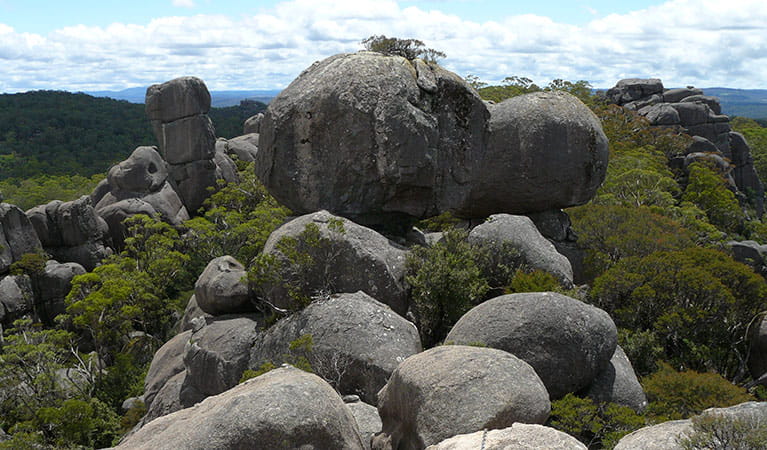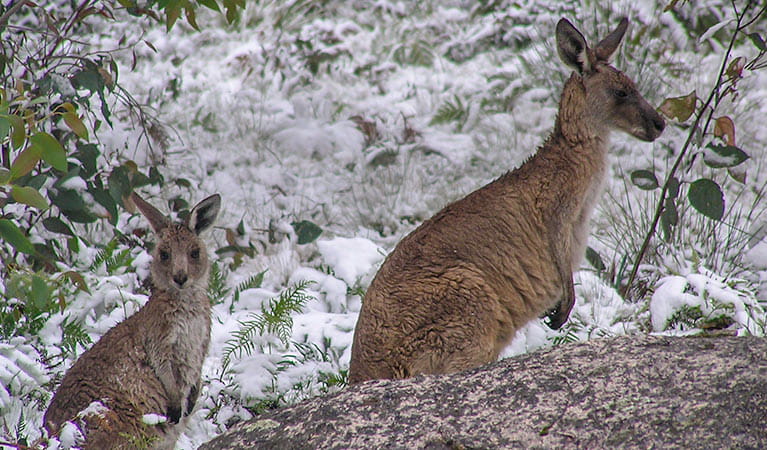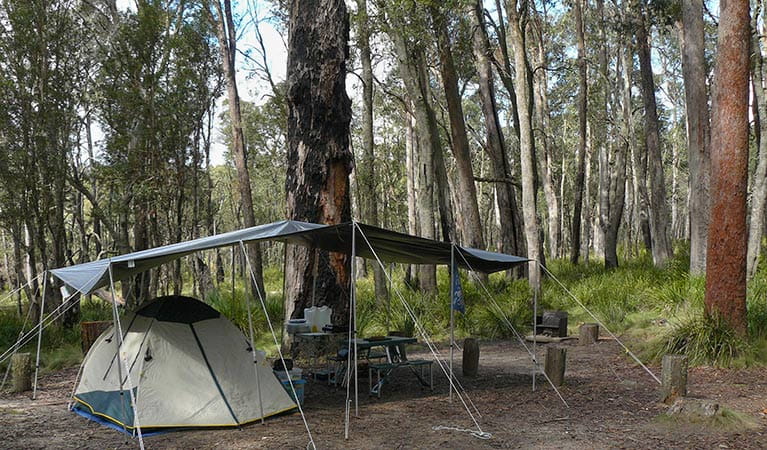Native Dog campground
Cathedral Rock National Park
Learn more
Learn more about why this park is special
Native Dog campground is in Cathedral Rock National Park. Here are just some of the reasons why this park is special:
270 million years in the making

The granites of the New England batholith, which formed deep beneath the earth's surface 270 million years ago, dominate Cathedral Rock National Park. For the next 50 million years, further intrusions of molten rock were forced into fissures deep within the earth's crust, forming some of the dykes evident in the park today. Weathering has exposed large granite tors - most notably, Cathedral Rock, a series of large granite boulders perched one on top of another to a height of about 200m and extending approximately 1km. The most recent geological feature in the park is the basalt-capping on the summit of Round Mountain, a domed peak in the centre of the park. These basalt flows originated in the Ebor volcano, centred to the east of Point lookout, which was active around 18 million years ago.
- Cathedral Rock track Cathedral Rock track is an exciting and challenging walk, near to Barokee campground and Round Mountain, offering scenic views across the New England Tablelands from the summit.
- Warrigal walking track Warrigal walking track, close to Native Dog campground in Cathedral Rock National Park, is a short, easy walk that’s popular with families and those who enjoy birdwatching.
- Woolpack Rocks Starting from Native Dog campground, follow this track to Woolpack Rocks, where you can picnic, birdwatch and walk to the summit for views across the New England Tablelands.
Rich with colour and biodiversity

Flax lily, pixie cap and wax lip are just some of the flowering plants and understory shrubs you'll find in Cathedral Rock National Park. Most wildflowers emerge in spring, but ground orchids bloom at various times of the year, and banksias display their orange flowers year-round. Keep a particular eye out for the Montane green five-corners - this threatened plant only grows on granite soils in or near the park. You'll also find concentrated areas of wattle, where broad-leaf hickory, silver and fern leaf wattle flower in late winter and early spring. Eastern grey kangaroos graze in the open grassy areas of the park alongside red-necked and swamp wallabies and wallaroos. Other wildlife you're likely to spot here are glossy black cockatoos, skinks, wedge-tailed eagles and rose robins by day, and the threatened brush-tailed phascogales and spotted-tailed quolls by night.
- Barokee to Native Dog Creek walk This track is the longest in Cathedral Rock National Park. It links Barokee and Native Dog campgrounds and takes in both Woolpack Rocks and Cathedral Rock along the way.
- Warrigal walking track Warrigal walking track, close to Native Dog campground in Cathedral Rock National Park, is a short, easy walk that’s popular with families and those who enjoy birdwatching.
Walking experiences for all levels

From a stroll to a scramble, there are plenty of walking opportunities in Cathedral Rock National Park. Hiking tracks are easily accessible from the campgrounds and the longest track - Barokee to Native Dog Creek walk - can be started from either end. Cathedral Rock track is a medium-difficulty walk, and will take you almost three hours. And there are off-track opportunities for those who are experienced, well-equipped, and walking as part of a group.